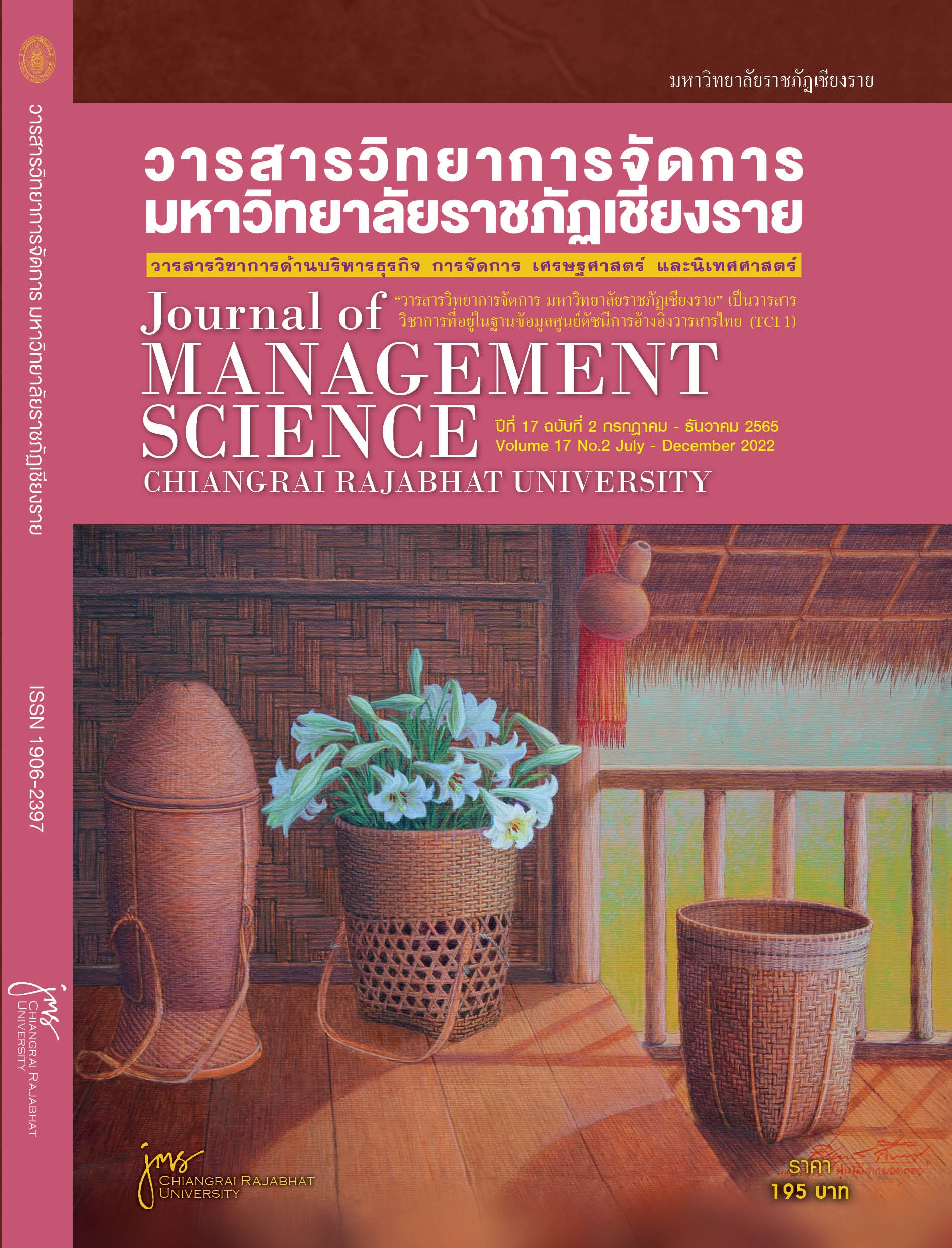The Analysis of LGBTQ+ Tourists Behavior in Chiang Mai Province
Main Article Content
Abstract
This research aimed to study behaviors and attitudes towards tourism of LGBTQ+ tourists, both Thais, and foreigners traveling in Chiang Mai. To analyze the results and propose guidelines for developing a marketing strategy for Chiang Mai tourism that is suitable for the needs and behaviors of tourists with gender diversity, both Thai and foreigners by using questionnaires to collected data. This research used purposive sampling, the sample was assigned as an LGBTQ+ group, consisting of 200 Thai tourists and 200 foreigners, together with snowball sampling. The study used the marketing mix factor (7Ps) and the tourism component (5As) as a descriptive statistics analysis tools in order to obtain guidelines for developing marketing strategies for tourism in Chiang Mai Province that are suitable for the needs and behaviors of tourists with gender diversity (both Thais and foreigners).
The study found that foreign LGBTQ+ tourists pay more attention to the marketing mix factor (7Ps), focusing on process, personnel, and physical presentation factors. as well as the tourism component factor (5As), where foreign LGBTQ+ tourists prioritize accommodation, accessibility and facilities as the top 3 rankings. The guidelines for the development of marketing strategies for Chiang Mai tourism for gender diversity (LGBTQ+) both Thais and foreigners can be divided into three levels: 1) Cooperate level. 2) Business level) and 3) Functional level. These strategies are focused on the development of products, services, technology, communication, safety measures, as well as the development of public transport to make Chiang Mai the center of innovative tourism with full potential and efficiency.
Article Details

This work is licensed under a Creative Commons Attribution-NonCommercial-NoDerivatives 4.0 International License.
Views and opinions expressed in the journal do not necessarily reflect those of the editors.
References
Atkins, G. L. (2012). Imagining Gay Paradise: Bali, Bangkok, and Cyber-Singapore. Hong Kong: Hong Kong University Press.
Dickman, S. (1996). Tourism: An Introductory Text. 2nd ed. Sydney: Hodder Education.
Ferfolja, T & Ullman, J. (2020). Gender and Sexuality Diversity in a Culture of Limitation. Retrieved April 5, 2021, from https://www.researchgate.net/publication/341295592_Gender_and_Sexuality_Diversity_in_a_Culture_of_Limitation_Student_and_Teacher_Experiences_in_Schools
Ministry of Tourism and Sports. (2561). Statistics of Thai domestic tourism in 2018. Retrieved April 5, 2021, from https://www.mots.go.th/download/article/article_ 20191009135549. pdf. (in Thai).
Ollis, D., Mitchell, A., & Watson, J. (2001). Talking Sexual Health: A National Application of the Health Promoting School Framework for HIV/AIDS Education in Secondary Schools. Journal of School Health. 70(6), 262–264.
Out Now Consulting. (2020). Looking at opportunities for the LGBTQ+ market to revive Thai tourism during the economic downturn. Retrieved April 5, 2021, from https://voicetv.co.th/read/xIl3YtBCy (in Thai)
Piyachat Puangniyom, Chiratus Ratanamaneichat, Nitibodee Sukjaroen. (2017). Hotel Business Guidelines for Creating LGBT Marketing Opportunity. Veridian E-Journal, Silpakorn University (Humanities, Social Sciences and arts). 10(3). 2,455-2,471. (in Thai).
Preecha Asawakosinchai. (2017). Bangkok: Physical Therapy Association of Thailand (PTAT). Bangkok: Physical Therapy Association of Thailand. (in Thai).
Rattanaprayoon, S. & et al. (2018). Marketing mix affecting travel decision-making in Thailand, a case study. LGBTQ (LGBTQ). Retrieved March 31, 2021, from http://mis.nrru.ac.th/gradjournal/uploadify/uploads/Test/715%2004-05-18%2003- 46-43.pdf. (in Thai).
Teerapraseart, W. (2015). Create a new power for tourism in Nan. Retrieved April 5, 2021, from http://www.tcdc.or.th/articles/others/21952/. Service-Design-Force. (in Thai).


